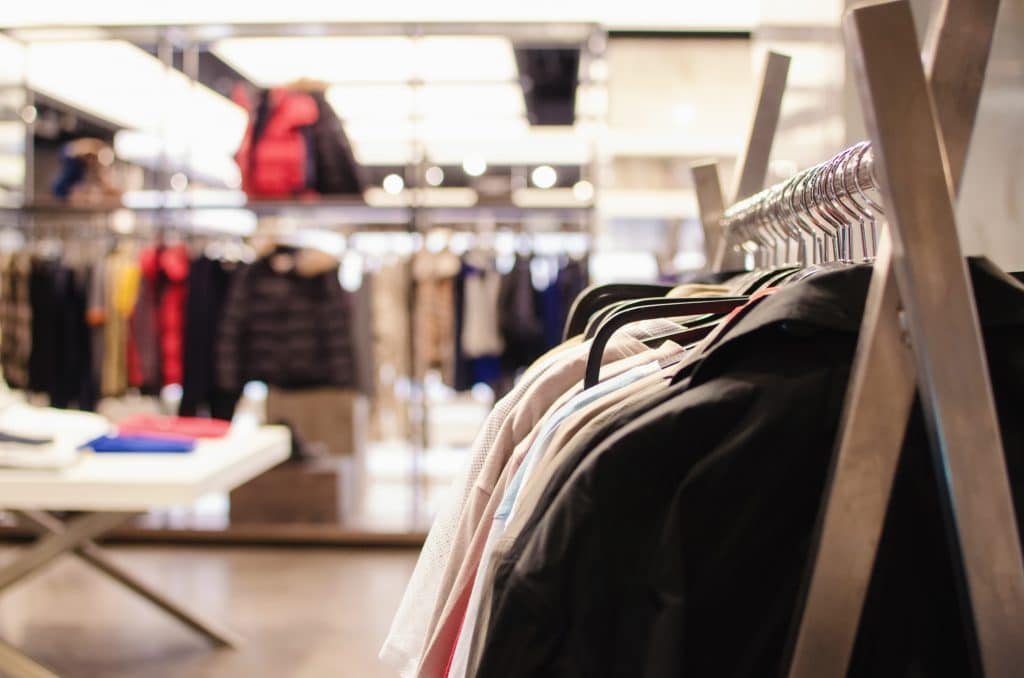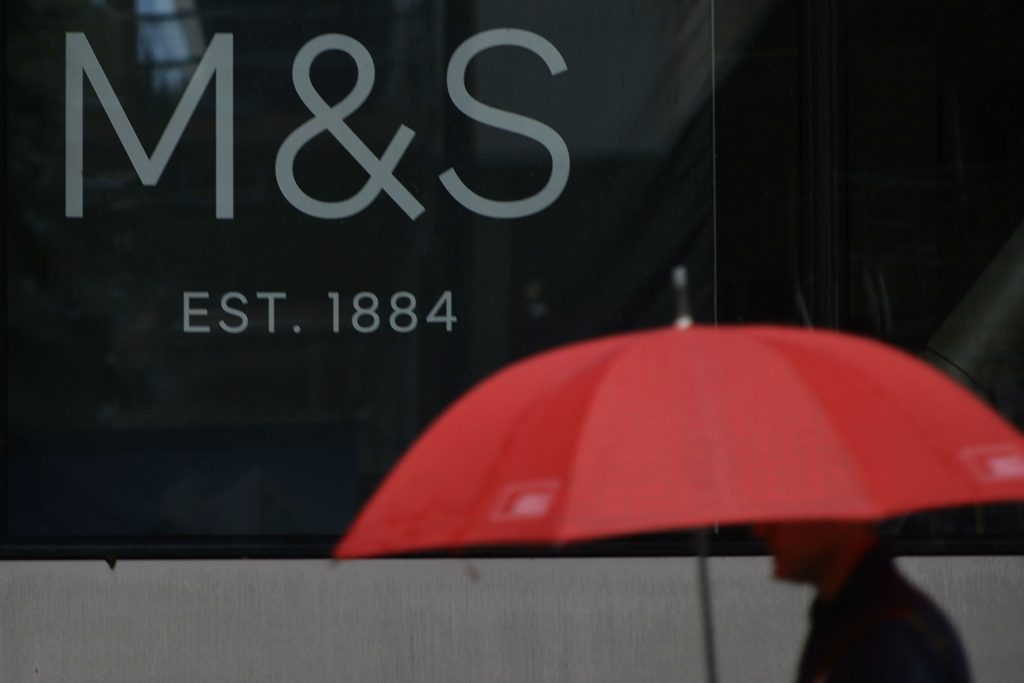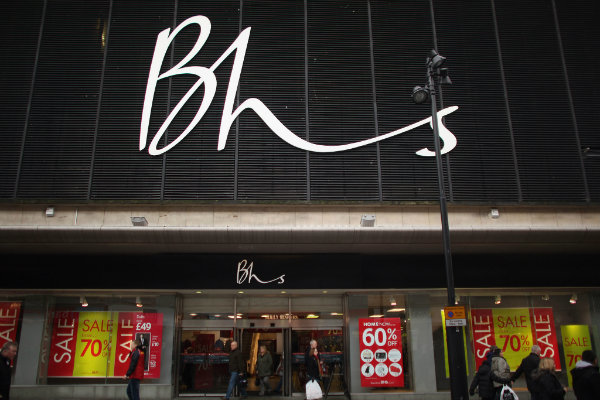Department stores, whether mid-market or luxury, have had their fair share of struggle.
It’s no secret that mid-market department stores such as House of Fraser, Debenhams, John Lewis and even Marks & Spencer have been faltering for some time now, battling numerous fronts. So much so that in 2018, the number of department stores in England fell 25 per cent in less than a decade to just 180, according to research from crowdfunding marketplace Lendy.
The most recent full-year trading update for the John Lewis Partnership – the holding company for the eponymous department store chain – saw total revenue rise by a mere one per cent year-on-year to £10.3 billion, while operating profit plummeted 45.4 per cent from £292.8 million to £160 million.
The profit declines were driven by a 55.5 per cent year-on-year crash in operating profit from John Lewis, as well as a 1.4 per cent decline in like-for-like sales across the department store chain.
As a result, John Lewis Partnership slashed staff bonuses to just three per cent – the lowest since the mid-1950s. Outgoing chairman Charlie Mayfield said at the time that he expected “2019 trading conditions to remain challenging”. Early indications shows he may be right – the partnership’s weekly trading update has shown fluctuating results for John Lewis.

Meanwhile, as 2019 becomes more and more about experiential retail, competition stiffens.
“Retailers need to focus on the ‘in-store’ shopping experience for their customers and look to increase the spend time in store,” Nicky Stewart, partner at law firm Howard Kennedy, told Retail Gazette.
John Lewis certainly dipped its toes into experiential retail by expanding into home improvement in mid-June. It also ran a click-and-collect trial with the Co-op in May to drive innovations and increase services for customers. This is on top of the concierge service and style consultants it already offers.
Another department store that attempted to connect with customers through experiential retail is Debenhams.
In April 2017, then-chief executive Sergio Bucher unveiled his Debenhams Redesigned turnaround strategy which featured a radical shake-up of the business as well as goals to make Debenhams a “destination” shop with an improved online offering and new in-store customer experience initiatives.
Investors didn’t respond too kindly, with shares dropping five per cent the day after the strategy was launched.
Moreover, Debenhams sent shockwaves through the industry when it fell into administration in early April. Nonetheless, the retailer quickly fell under the control of its lenders – a consortium of banks and investors – after administrators from FTI Consulting were appointed to handle the successful sale of the business through a pre-pack deal.
Chris Long, a retail managing consultant at Capgemini Invent said department stores still have an opportunity to revive their status.
“We are already seeing retailers working hard to transform their offerings. Debenhams continues to work on initiatives to provide a better customer experience using online data to inform what product ranges should be available in-store,” Long told Retail Gazette.
“Initiatives such as the Beauty Club Community online has enabled them to understand what products their customers want to buy, enabling this information to then flow into their product range and stock management decisions.”

Manchester Metropolitan University retail senior lecturer Amna Khan told Retail Gazette that department stores should try to become a hub of services and learning experiences.
“It is important to offer consumer experiences through which the customers are learning new skills from influencer markets,” she said.
Despite its best efforts, Debenhams was arguably late to offer experiential retail compared to John Lewis and even Selfridges. It can also argued that Debenhams’ collapse was down to having too many stores.
With 166 stores across the UK, its sales were falling while costs were rising. In its full year report late last year – whereby it revealed a historic statutory loss of £491.5 million – Debenhams revealed plans to close around 50 under-performing stores in the next three to five years.
But since a CVA was launched after it fell under the control of lenders, Debenhams has said that the store closure scheme would be accelerated: the first tranche of stores – around 22 of the earmarked 50 – would close down just after the peak Christmas trading season.
“The announcements of a number of Debenhams store closures last year and issues related to liquidity have had a lasting impact on the brand,” Khan said.
“A quick turn-around and bounce back would be difficult, if not impossible.
“Changes in consumer shopping behaviour and lifestyles, coupled with high rents, have put significant pressure on mid-market department stores.
“The downward trend is continuing simply because mid-market department stores such as House of Fraser and Debenhams do not offer consumers a unique proposition or experience when they shop.”
In June, Debenhams chairman Terry Duddy – who resigned just last week – said at least 30 stores will be downsized in an attempt to survive online competition. This was the retailer’s first stage of its recovery plan to shrink about a third of its remaining stores under its CVA.
While Debenhams’ down spiral sent ripples through UK retail – it was not alone. Its closest competitor, House of Fraser, has also kept the industry on edge.
It had a poor Christmas trading season in 2018, with sales during the crucial trading season nosediving. According to figures by Kantar Worldpanel, as reported by The Sunday Telegraph, the department store recorded a 60 per cent year-on-year crash in sales in the 12 weeks leading up to December 18.
It was House of Fraser’s first Christmas under the ownership of Sports Direct, the retail empire that is majority-owned and run by retail tycoon Mike Ashley. The Scottish department store was rescued from collapse last August in a £90 million pre-pack administration deal.
At the time, Ashley said he would turn the department store into the “Harrods of the high street” and would strive to keep as many stores open. It had 59 stores at the time.
That catch phrase seemed hollow when Sports Direct’s recent full year report saw Ashley admit that House of Fraser was in terminal decline and that more stores would need to close.
On its own, the department store recorded an operating loss of £54.6 million for the year ending April 28, on the back of revenues of £330.6 million. Just this month, the Financial Times reported that as many as two-thirds of the original 59 stores could close down.

Many House of Fraser stores were or are operating on rolling or short-term leases at low rents while their business performance is evaluated. Many of these are one-year agreements which were struck with landlords after Sports Direct acquired the retailer.
Notable House of Fraser stores that have already shut down include the City branch in London, and at Hull, which shut its doors at the start if the month even though it was initially saved from closure at the end of last year.
But not all hope is lost. In May, Sports Direct made a pledge to invest hundreds of millions of pounds into House of Fraser, which includes redeveloping up to 31 stores into the luxury Frasers fascia over the next five years. However, the Financial Times reported that Ashley only needed about 15 to 20 refurbished stores trading in the Frasers format.
In the meantime, many House of Fraser stores have faced criticism since Ashley’s takeover, due to shop floors now resembling the layout of Sports Direct, and with upmarket brands such as Ralph Lauren having prices slashed from £335 to £80.
Its apparent tiredness and incapability to relate to the changing consumer market is a risk for any company – and this is where fast fashion retailers such as Primark and Zara have had the winning hand.
“2019 remains a challenging year for mid-market department stores, as we’ve continued to see many closures and a focus on operational cost-cutting along the way with House of Fraser and Debenhams leading the trend with their CVAs in place,” Long said.
Meanwhile, M&S – historically a department store that is increasingly turning into a food retailer – recently poached Topshop fashion director Maddy Evans to help bolster clothing sales by attracting millennials.
It came after clothing & home managing director Jill McDonald after nearly two years in the role. Her departure followed a string of dismal trading updates that declining sales in the M&S’s non-food arm, as it pushes on with a turnaround strategy that has a focus on closing scores of under-performing stores around the country – most of which fall under the retailer’s clothing and home division.

As mid-market department stores battling the high street’s tough trading conditions, luxury department stores seem to be running smoothly.
Liberty is certainly one of them.
On July 19, BlueGem sold its controlling 40 per cent stake in the retailer to private equity consortium Glendower Capital in a deal valuing the business at £300 million. Bluegem first acquired Liberty in 2010 for £32 million, meaning the secondary recapitalisation announced in July delivered them massive return.
It can be argued that Liberty’s authenticity gives it a sense of uniqueness, which has helped boost sales and profits. BlueGem said that in 2018, Liberty’s revenues and EBITDA had grown to £166 million and £25 million respectively – compared to sales of £63 million and an EBITDA close to zero back in 2010.
Moreover, luxury department stores have been able to provide experiences for customers which are in-store exclusive only. James Lintern, co-founder of rota planning service RotaCloud, told Retail Gazette that stores need to provide an experience that can’t be found online.
“For example, department stores may dedicate some space to in-store tailoring services or a cafe, which generates more revenue, provides a draw for customers, and increases their dwell time,” he said.
This might explain why luxury department store Harrods introduced a pop-up Fendi cafe on their fifth floor. In its most recent full-year report, the iconic London department store raked in sales of £2.1 billion, a 6.8 per cent uptick on the prior year.
Meanwhile, Selfridges offered an indoor skating experience to attract footfall. It also reported a record-breaking Christmas result thanks to the exclusive range of products it had on offer.

Selfridges said sales spiked 10 per cent for just the Oxford Street flagship during the 24 days up to Christmas, which came after it had an extensive revamp – including opening a new accessories hall and menswear section.
Fortnum & Mason also joined Selfridges and Harrods in celebrating surging sales. The heritage department store recorded 12 per cent year-on-year growth during Christmas season, boosted by what it said was an “ever-increasing” number of domestic shoppers as well as a 16 per cent uptick in overseas customers.
Fortnum & Mason then announced in April it would open its first store outside the UK in Hong Kong this September – thanks to popularity amongst Chinese customers.
Meanwhile, Harvey Nichols last year revealed its annual EBITDA had skyrocketed 102 per cent to £14.7 million, while full-year revenues rose nine per cent to £210 million.
While trading remains tough on the high street for House of Fraser, Debenhams and John Lewis, Harvey Nichols’ upmarket focus and strategies – along with the strategies in place from other luxury department stores – and has left it well-positioned to outplay its rivals.
Although 2019 has seen mixed results so far, it remains uncertain as to how mid-market department stores will perform for the rest of the year.
Click here to sign up to Retail Gazette‘s free daily email newsletter


















